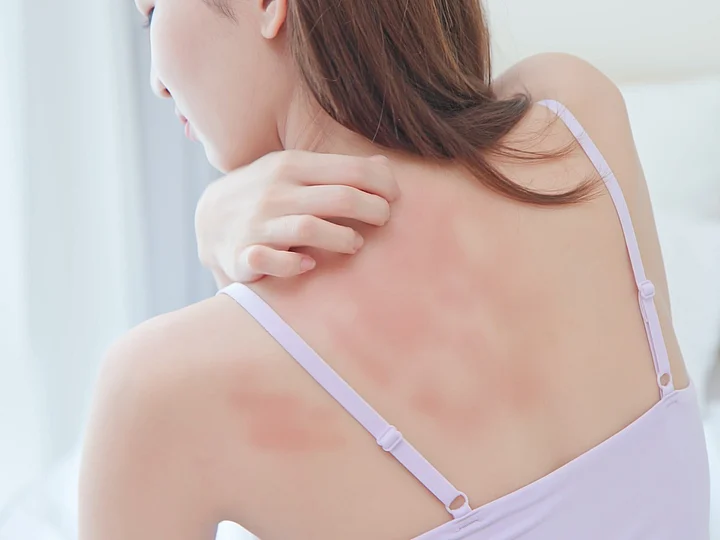Dermatitis can be described as a general skin irritation that is of various types. The skin swells and becomes dry, itchy, clustery; it results in red rashes as well. The skin begins to have blisters that ooze, form a crust, or become flaky. The skin condition is not contagious and simple steps like regular moisturisation can prevent the worsening of the condition.
Severe cases may require medical treatment like ointments, creams, and shampoos. Here are the common symptoms, causes, types, diagnosis, and treatment of dermatitis.
Types of Dermatitis
Atopic Dermatitis, also known as eczema, usually affects a person in infancy, and family history or genetics can be the reason. Few people also suffer from it in adulthood. There is no cure for this type of dermatitis and it may have rare or no symptoms. During the flare-up, the skin may appear rough, dry, flaky, and itchy.
Contact dermatitis affects a person when the skin comes in contact with a substance and results in an adverse reaction, causing rashes that are often stingy, itchy, or have a burning sensation. This skin condition may also be an allergic reaction that damages the skin or may react in a way affecting the immune system.
Dyshidrotic dermatitis occurs when the skin cannot protect itself and symptoms like itchiness, dryness, and blisters appear on the hands and feet.
Dermatitis: Signs & Symptoms
Here are the common signs and symptoms of Dermatitis (US NIH):
Itchiness
Dryness
Rashes on swollen skin
Oozing or crusting blisters
Flaky skin
Thickened skin
Bumps in hair follicles
Dry and cracked skin
Painful skin with a stinging or burning sensation
Swelling
Dermatitis: Causes & Risk Factors
Dermatitis usually gets triggered when a person's skin comes in contact with substances like poison ivy, perfumes, lotion, and jewelry containing nickel. Other causes may include dry skin, a viral infection, bacteria, stress, makeup, and genetics. Other risk factors are mentioned below (US NIH):
Dermatitis can affect people of any age but atopic dermatitis usually affects infants in most cases.
People who have a history of allergies, asthma, or eczema may also suffer from atopic dermatitis.
People who work with certain metals, solvents, or cleaning supplies increase their risk of contact dermatitis.
People who have a history of congestive heart failure, Parkinson's disease, and HIV/AIDS can also increase their risk of dermatitis.
Dermatitis: Diagnosis
If your symptoms become extremely severe, contact a doctor and he may perform a physical exam and discuss your medical history. The doctors may diagnose a few types only by looking at the affected areas.
Doctors may also do a skin patch test. For a skin patch test, your doctor will put small amounts of different substances on your skin that may help them determine if you are allergic to certain substances.
Dermatologists may perform a skin biopsy to figure out the cause. Your doctor may remove a small sample of the affected skin and look at it under a microscope.
Dermatitis: Treatments
Treatments for dermatitis depend on the type and severity of symptoms and cause. Few cases of dermatitis disappear on their own. Other treatments include (Healthline):
Medications for allergies and itching
Phototherapy in which the affected areas are exposed to controlled amounts of light
Topical creams with a steroid also relieve itchiness and inflammation
Creams or lotions can help moisturise dry skin
Oatmeal baths have proved to reduce itching
Doctors may recommend antibiotics or antifungal medications if the skin breaks due to intense scratching
(At The Quint, we question everything. Play an active role in shaping our journalism by becoming a member today.)
